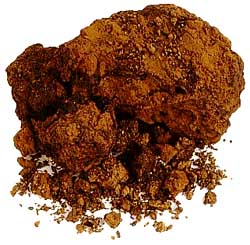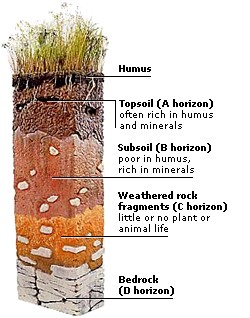DK Earth: Soil
Soil is one of Earth’s most precious resources. It provides the support and nourishment that plants need in order to grow. In turn, plants provide food for animals and people. As well as rock fragments, SOIL LAYERS contain air, water, and plant and animal remains.
Soil is formed as rock is broken up by ice, frost, wind, and water. Plants take root among the rock fragments and bind them together. When plants die, they fertilize the soil. Soil takes many years to form, but it can be destroyed very quickly by bad farming methods, such as deforestation (clearing the land of trees).
There are three main types of soil—clay, sandy, and loamy. There are also other types of soil, depending on the type of underlying rock and the climate and vegetation. Loams are a mixture of clay, sand, and silt, and are more fertile than other soils.
Living things play an important role in helping to recycle nutrients (nourishing minerals) that enrich the soil. When plants and animals die, their remains are broken down by scavenging creatures, such as beetles, microscopic bacteria, and fungi. This releases minerals into the soil. The minerals fertilize plants so they can grow, and so the cycle of life begins again.
Soil scientists divide the soil into layers from the surface down to the underlying bedrock. This is called a soil profile. The layers in a soil profile are known as horizons. The depth of each horizon varies among different types of soil.
A layer of dark, fertile humus made of rotting plants lies at the soil’s surface. Underneath, the topsoil contains plant roots, and plant and animal remains that bacteria and fungi are helping to rot down. The subsoil contains fewer plant and animal remains but has plenty of minerals washed down from the layers above. Below are rock fragments, then solid bedrock.




